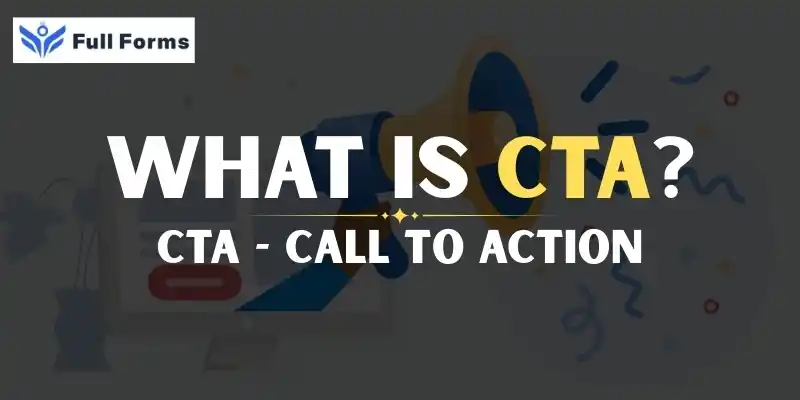Call to Action
(CTA)

Description
Understanding Call to Action: A Basic Guide
If you’ve ever surfed the web, opened an email, or been served an ad online, chances are you’ve seen or heard action phrases like “Buy Now,” “Sign Up,” or “Learn More.” They’re not just words on a page—they represent a Call to Action, often abbreviated as CTA. But what is a Call to Action anyway and why should you care? More importantly, how do you nail the ideal use of it? Rest easy: this post explains all that in plain English.
What exactly is a Call to Action (CTA)?
In simple words, a Call to Action (CTA) in the jargon of marketing, advertising, and sales of web pages is the requirement to push the visitor to perform some targeted action. In most cases within websites, advertisement, and sales, CTA appears as a phrase of short wording or a push button which indicates what a person should do next. The intention is to lead the website visitor, reader or consumer to a specific activity; purchase, subscribing to a newsletter, downloading something or contacting an enterprise.
Think of it more as a friendly travel guide than a sneaky suggestion buried in your website or message someone is already looking for the right direction to take.
Conversion points are onboarded with CTAs since they turn visitors into customers or followers. Without a strong CTA, a user might not understand what you want him to do. He can be attracted to read your content or view your product but leaves without taking any action. Therefore, a good CTA presents people with a very next clear next step to take in engaging.
- Guide the User: CTAs guide the user’s next action by providing directions.
- Increase Engagement: Enhancing the visibility of pertinent CTAs on a page can increase clicks, sign-ups, or sales.
- Measure Success: Peek at exactly how many people are clicking at the CTAs of your site, and have a look at what’s working and what’s not.
- Grow Your Audience: Grow your email marketing list, social following, or customer base with strategic CTAs on your copy.
Common Types of CTAs
There are lots of different kinds of Calls to Action depending on your goal. Here are a few common ones:
- Buy Now: Meaning, the visitor should buy a product.
- Sign Up: Asking people to join a newsletter, webinar, or service.
- Learn More: Inviting users to get more information about a topic or product.
- Download: Telling users to download an app, eBook, or file.
- Contact Us: Meaning a user should contact you for help or more details.
- Subscribe: This is for people who want to follow a blog, podcast, or video channel.
Where are CTAs Used?
CTAs can be found in many places including:
- Websites: on Homepages, Product pages, or Landing pages
- Emails: contained in Newsletters or promotional messages
- Social Media: as Posts or Ads
- Online Ads: whether Banners or Pop-Ups
- Printed Materials: such as Flyers, Brochures, or Posters
What Makes a Good CTA?
A successful Call to Action is clear, ‘to the point’ and simple to follow. How do you come up with a good CTA? Here are some tips:
- Be Direct: Use clear, action-oriented language like “Get Started,” “Download Now,” or “Join Free.”
- Make it Stand Out: Add buttons, bold text, bright colors – whatever draws the eye straight to it.
- Create Urgency: Tack on phrases like “Limited Time Offer” or “Sign Up Today” so your visitors feel compelled to do so now.
- Keep it Relevant: Make sure your CTA is what your audience is looking for or needs.
- Place it wisely: Put your CTA in a place that’s easily seen, like in the middle of a page or at the end of a blog post.
CTAs
- Online shop: “Add to Cart” or “Shop the Sale”
- Email: “Claim Your Discount”
- Blog: “Read More Articles” or “Subscribe for Updates”
- Service: “Book a Free Consultation”
Testing and Improving Your CTA
Some CTAs don’t behave the same for everybody. It would be wise to test various words or colors or placements of the same CTA, in order to determine which one appeals to your audience most. This is known as “A/B testing” – for instance, “Get Started” versus “Join Now” to find out which gets more clicks.
Regardless of the kind of website or business, you operate, Calls to Action need to be robust. They help in getting in touch with the audience, lifting sales, and growing the brand. Perhaps you are a brand that only wants to impart information; a CTA can prompt people to learn more or ask for help.
Conclusion
The Call to Action is a very simple but very powerful marketing and communication piece. As the audience gets to know just what to do, a CTA helps the business meet its ends. Be it to purchase, register, or learn more, the well-crafted CTA is what makes a real difference. So next time you’re building a website or crafting an email or writing on the social media platform, do remember to add in a clear and appealing Call to Action!
